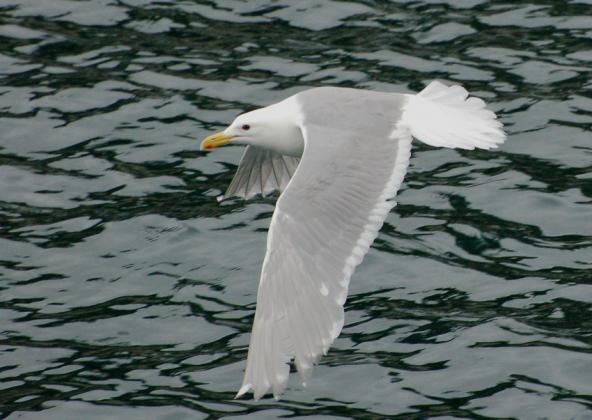A century of change in Glaucous-winged Gull populations in a dynamic coastal environment
A 2015 paper in the journal The Condor: Ornithological Applications describes century-long trends in Glaucous-winged Gull populations in British Columbia.

This paper, which is rare in that it reviews data from over 100 years of studies, demonstrates the importance of long-term monitoring for understanding the drivers forcing fluctuations in marine bird populations. The authors show that Glaucous-winged Gull populations have fluctuated dramatically over the last century and a complex and likely interactive combination of factors including predation, quality of forage available, and human activities such as egg collecting and poor garbage disposal practices have contributed to this. — Joe Gaydos, Birds and Mammals editor for the Encyclopedia of Puget Sound
Abstract
As conspicuous midtrophic omnivores, gulls can serve as useful indicators to characterize long-term ecological changes in marine ecosystems. Glaucous-winged Gulls (Larus glaucescens) have been studied in the Georgia Basin of British Columbia, Canada, an urbanized coastal zone, since the late 1800s. We collated all available information to develop a (noncontinuous) 111-year time series of counts at breeding colonies, and combined these counts with demographic vital rates to assess how changes in historical gull egg harvesting practices, forage fish abundance, and Bald Eagle (Haliaeetus leucocephalus) numbers affected gull population trajectories from 1900 to 2010. Mean counts at 87 breeding colonies in the Georgia Basin showed a nonlinear trend, increasing from historical low counts in the early part of the twentieth century to peak values in the 1980s, and declining thereafter to the end of the time series. Demographic models that integrated temporal trends in clutch size and nesting success, and which also included a food-related decline in first-year survival or a further reduction in nesting success as a function of eagle abundance, successfully reproduced trajectories of gull population growth rates over the study period. Glaucous-winged Gulls have thus responded to a series of changes in the Georgia Basin. These patterns are consistent with population release following cessation of egg harvesting; growing reliance by gulls on nonfish foods and resulting declines in clutch size, productivity, and first-year survival; and the effects of recovering Bald Eagle populations. These results highlight the value of compiling data from multiple retrospective studies to better understand the complex factors affecting long-term trends in animal populations.





